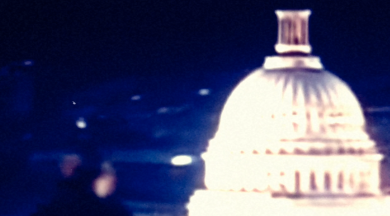 There is a piece in the New York Times Magazine about the economist Robert Gordon which has the potential to paradigm-shift our view of an ever improving life and endless economic growth. His main point is that the second industrial revolution was a singular historical event which will not be followed by a similar game-changer of the same scope, be it the digital revolution or robotics or any other new technology. In his view, the huge change, the second industrial revolution incited, expired slowly over the last decades leaving us with growth rates much smaller as a century ago. Though his perspective is an american, this can also apply for all other western countries. As Benjamin Wallace-Wells reports:
There is a piece in the New York Times Magazine about the economist Robert Gordon which has the potential to paradigm-shift our view of an ever improving life and endless economic growth. His main point is that the second industrial revolution was a singular historical event which will not be followed by a similar game-changer of the same scope, be it the digital revolution or robotics or any other new technology. In his view, the huge change, the second industrial revolution incited, expired slowly over the last decades leaving us with growth rates much smaller as a century ago. Though his perspective is an american, this can also apply for all other western countries. As Benjamin Wallace-Wells reports:
The forces of the second industrial revolution, he (Gordon) believes, were so powerful and so unique that they will not be repeated. The consequences of that breakthrough took a century to be fully realized, and as the internal combustion engine gave rise to the car and eventually the airplane, and electricity to radio and the telephone and then mass media, they came to rearrange social forces and transform everyday lives. Mechanized farm equipment permitted people to stay in school longer and to leave rural areas and move to cities. Electrical appliances allowed women of all social classes to leave behind housework for more fulfilling and productive jobs. Air-conditioning moved work indoors. The introduction of public sewers and sanitation reduced illness and infant mortality, improving health and extending lives. The car, mass media, and commercial aircraft led to a liberation from the narrow confines of geography and an introduction to a far broader and richer world. Education beyond high school was made accessible, in the aftermath of World War II, to the middle and working classes. These are all consequences of the second industrial revolution, and it is hard to imagine how those improvements might be extended: Women cannot be liberated from housework to join the labor force again, travel is not getting faster, cities are unlikely to get much more dense, and educational attainment has plateaued. (…) If you take this perspective, it is no wonder that the productivity gains have diminished since the early seventies. The social transformations brought by computers and the Internet cannot match any of this.
In order to keep the former pace of economic growth, the innovations will need to be far more transformative and eight times as important as before, he concludes.
Even among the most committed stagnation theorists, there is little doubt that innovation will continue—that our economy will continue to be buttressed by new ideas and products. But the great question at the center of the growth argument is how transformative those breakthroughs will be, and whether they will have the might to improve human experience as profoundly as the innovations of a century ago. One way to think about economic growth is as a product of human capital and technology: At moments like this, when human capital is not growing much (when the labor force is unlikely to grow, when it is not becoming more educated), all of the pressure rests on technology.
Unfortunately, technology these days is mainly busy disrupting markets and replacing jobs with machines and robots. Technologist Erik Brynjolfsson is quoted that Sixty-five percent of American workers occupy jobs whose basic tasks can be classified as information processing. Some, or even a large number of those jobs “were never really designed for the human mind. They were designed for robots. The existing robots just weren’t good enough to take them. At first.” Benjamin Wallace-Wells writes. Add the fact that Silicon Valley, where every wet dream of technological innovation is born, has only provided jobs for relatively few people but produced a handful of 20-something billionaires. “The new economy is turning human labor into just another computer process — and will keep wrecking jobs.” is the subtitle of a piece Andrew Leonard wrote about the old middle class turned into a new proletariat. Some self-critical notions have reached the Silicon Valley itself recently:
Like the problem of technology replacing jobs, there is no solution to technology’s feigned innocence. As nerds and underdogs, we will always believe we have the best intentions. That doesn’t negate the problem: Even though we’re not Washington D.C., we are still an industry with absurd amounts of power, attention and money. And plenty of intentional and unintentional opportunities to abuse it.
Alexis Tsotsis is refering to a New York Times article by Paul Krugman called “Sympathy for the Luddites”, that pre-shadows Robert Gordons views:
I’ve noted before that the nature of rising inequality in America changed around 2000. Until then, it was all about worker versus worker; the distribution of income between labor and capital — between wages and profits, if you like — had been stable for decades. Since then, however, labor’s share of the pie has fallen sharply. As it turns out, this is not a uniquely American phenomenon. A new report from the International Labor Organization points out that the same thing has been happening in many other countries, which is what you’d expect to see if global technological trends were turning against workers. (…) The McKinsey Global Institute recently released a report on a dozen major new technologies that it considers likely to be “disruptive,” upsetting existing market and social arrangements. Even a quick scan of the report’s list suggests that some of the victims of disruption will be workers who are currently considered highly skilled, and who invested a lot of time and money in acquiring those skills. For example, the report suggests that we’re going to be seeing a lot of “automation of knowledge work,” with software doing things that used to require college graduates. Advanced robotics could further diminish employment in manufacturing, but it could also replace some medical professionals.
Even though the effect of robotics on jobs are still disputed, it is highly unlikely that the digital revolution will spark such economic growth and the creation of new jobs on a scale the second industrial revolution did. After this, all the talk about the workers happily racing with the machines sounds very hollow.




